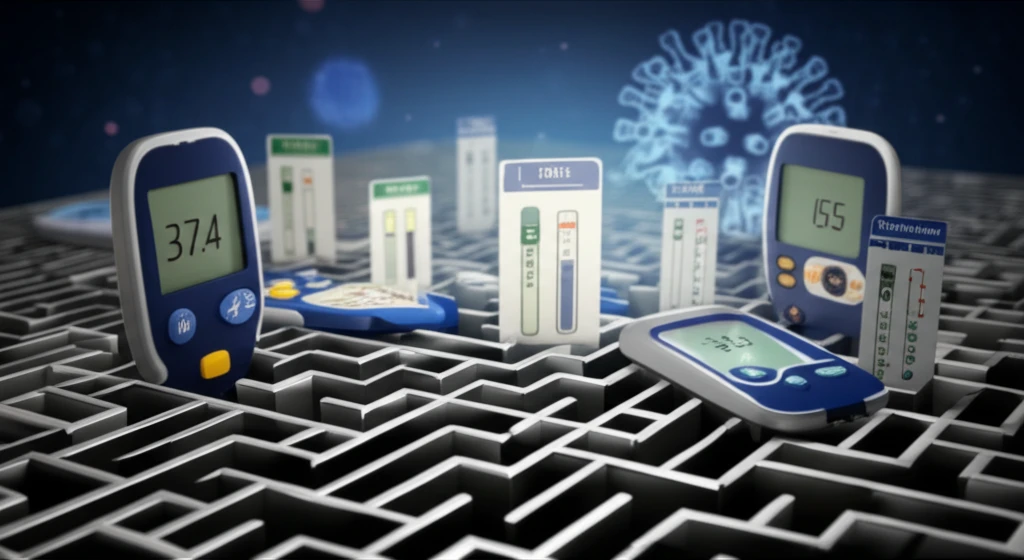
A1c, Fructosamine, or Glucose? How to Monitor Diabetes in HIV Patients
"Navigating the complexities of diabetes management in HIV-infected individuals: a practical guide to choosing the right monitoring method for accurate glycemic control."
Managing diabetes in HIV-infected patients presents unique challenges. The increased prevalence of abnormal glucose metabolism due to antiretroviral therapy (ART) and improved longevity necessitates careful monitoring. While general guidelines rely on hemoglobin A1c (HbA1c) for diabetes diagnosis and management, studies suggest that HbA1c values may be inappropriately low in HIV patients, leading to underestimated glycemia.
This article explores the complexities of monitoring glycemic control in HIV-infected individuals with diabetes. We'll delve into the accuracy of HbA1c, fructosamine, and glucose monitoring methods, providing insights to help healthcare providers and patients make informed decisions. The aim is to clarify which monitoring approach offers the most reliable assessment of blood sugar levels in this specific population.
Based on a comprehensive analysis, this guide aims to equip you with the knowledge to navigate these challenges effectively. By understanding the nuances of each monitoring method, we can strive for better diabetes management and improved health outcomes for HIV-infected patients.
HbA1c: Why It Might Not Tell the Whole Story in HIV Patients

HbA1c, the standard marker for glycemic control, measures the percentage of glycated hemoglobin in the blood. However, several factors can affect its accuracy, including age, ethnicity, and conditions like cirrhosis and renal failure. In HIV-positive individuals, a chronic low-level hemolytic state (either from the viral infection itself or from ART) may lead to falsely low HbA1c values, resulting in an overestimation of glucose control.
- HbA1c values underestimated actual average glucose (aAG) in 19% of patients and overestimated aAG in 27% of patients.
- HbA1c estimated aAG within the established range in only 54% of patients.
- The correlation between HbA1c and aAG was moderate (r=0.53, P<0.0001), indicating that HbA1c may not always accurately reflect average glucose levels in this population.
Making Informed Decisions for Better Diabetes Management
Monitoring diabetes in HIV-infected patients requires a nuanced approach. While HbA1c is a valuable tool, its limitations in this population necessitate the consideration of alternative methods like fructosamine and self-monitoring of blood glucose (SMBG).
By integrating multiple monitoring techniques and carefully considering individual patient factors, healthcare providers can develop personalized diabetes management plans that optimize glycemic control and improve overall health outcomes for HIV-infected individuals.
Further research is needed to fully elucidate the factors that affect HbA1c accuracy in HIV patients and to identify the most reliable strategies for diabetes monitoring. In the meantime, a comprehensive and individualized approach is essential to ensure optimal care.
